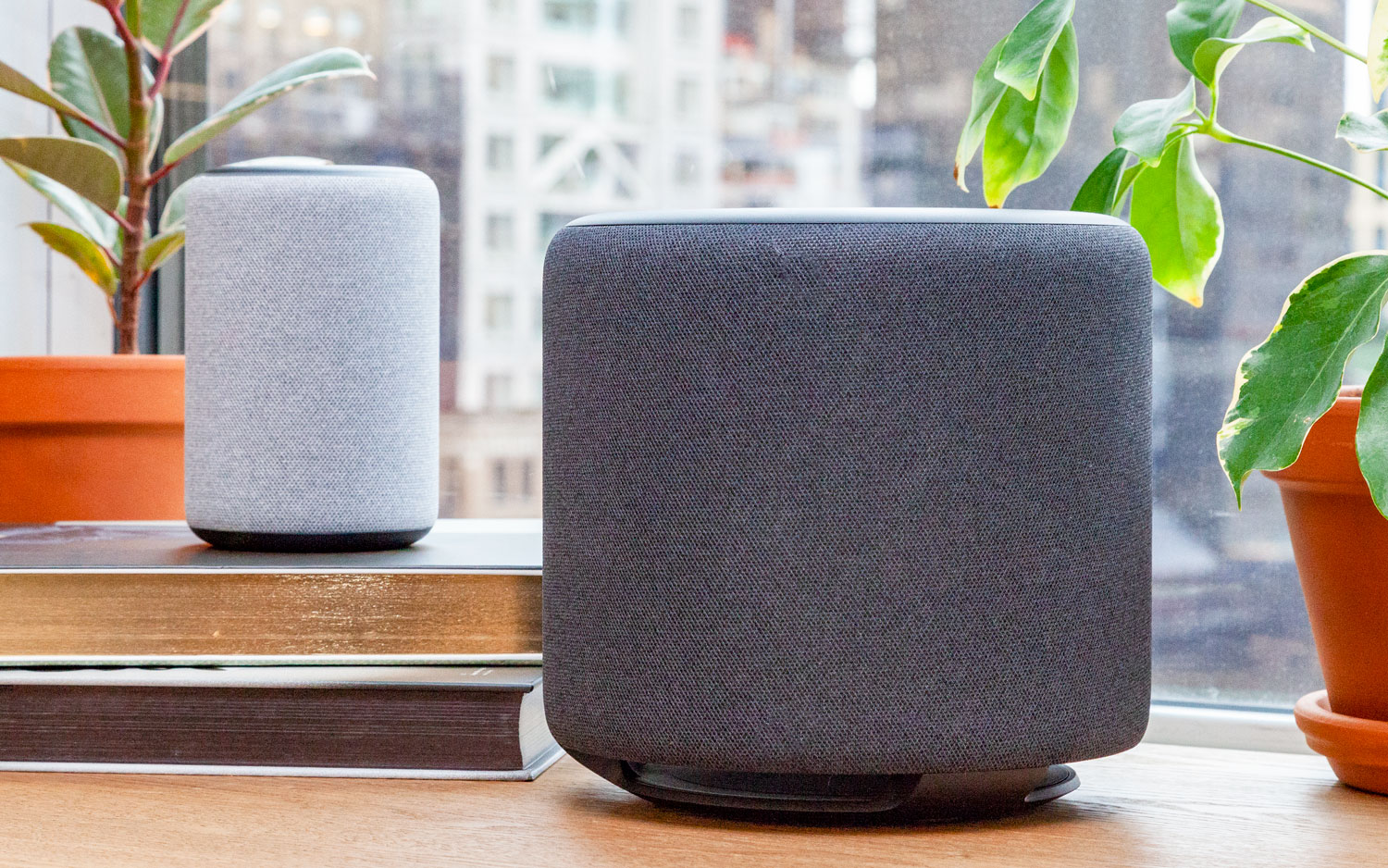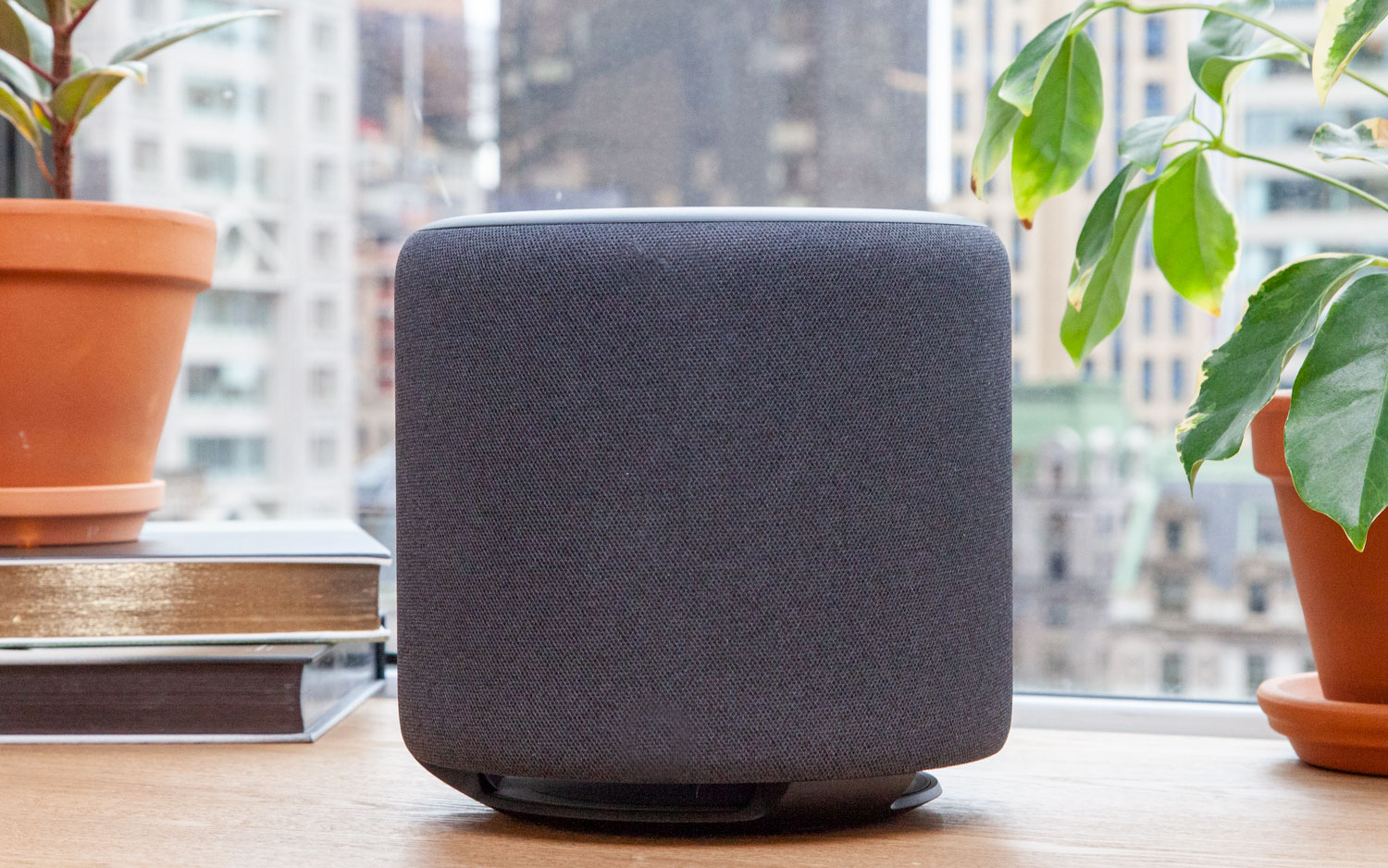Tom's Guide Verdict
The Echo Sub is a useful addition to Amazon's Echo lineup, but it can pair with only a select few Echo speakers.
Pros
- +
Big sound
- +
Compact
- +
Affordable
Cons
- -
Limited compatibility
Why you can trust Tom's Guide
Amazon's Echo lineup has made a name for itself as a family of smart speakers with above-average, but not premium, sound. The Echo Sub, a smart subwoofer that pairs with (some) Echo speakers, is Amazon's attempt to break that mold. At $129.99, it's a handy addition for smart-home owners who already own an Echo speaker, but really want to bring the bass.
Design: Expanded Echo
Rather than a large box, as I generally expect from a subwoofer, Amazon has opted for a fat, cylindrical version of its smaller Echo speakers: dark mesh fabric with a rounded top.
I appreciate that the Sub keeps the aesthetic of the rest of the Echo lineup. It almost looks cute next to the Echo Plus, like we're seeing a family of sorts.
MORE: Best Smart Home Hub
On the other hand, at 8.3 inches across by 8 inches tall, the Sub is a bit too reminiscent of a trash can for my liking. (It's also 9.3 pounds). I had trouble finding a place to put it in my living room where it wouldn't look a bit out of place — unlike a soundbar, it's not designed to blend in.
Setup and Compatibility
Get instant access to breaking news, the hottest reviews, great deals and helpful tips.
When it comes to pairing the Echo Sub with other speakers, your options are limited. It only works with Echo devices: You can't hook it up to your TV or a soundbar, and it won't work with any other third-party speaker. And not every Echo device is supported: You'll need the 1st- or 2nd-Gen Echo, 1st- or 2nd-Gen Echo Plus, 1st- or 2nd-Gen Echo Show, or 3rd-Gen Echo Dot. Notably, this means it won't work with any of the older Echo Dot models, or with the Echo Spot.

Setup may not be too difficult for users who have set up stereo pairs before, but it's more involved than the 3-minute setup process of devices like the Echo Plus and the Echo Show.
You can pair the Sub with up to two Echo speakers of the same type. But if the two speakers are already paired, you'll have to unpair them first, which is a bit of a pain.
The process is as follows: After setting up the Echo speaker (or speakers) you'll be pairing your Sub with, you register your Sub in the Alexa app and press the button on the bottom of the Sub to put the device in setup mode. Then, wait for the app to find both speakers and pair them.

On two different Wi-Fi networks, the Alexa app had problems doing this. It first couldn't find the Sub, then couldn't find the Echo I was trying to pair it with, then couldn't find my Wi-Fi network. Several times throughout the process, it became unresponsive or crashed. When it finally did find both devices, I had to wait several minutes for them to pair.
MORE: How To Kid-Proof Your Amazon Echo
I'm relieved that I was, ultimately, able to pair the device, but a number of Amazon reviewers who had similar problems couldn't spare the time. Even if the process had gone smoothly, however, I still wish we could pair and unpair the Sub with voice commands alone.
Audio Quality
The Echo Sub is almost twice the size of the Echo, and it just about doubles the sound. The bass it adds is certainly powerful — sometimes too powerful.

In "Under Pressure" by Queen and David Bowie, the baseline was so pronounced that I could feel the floor beneath me vibrating to the beat. The percussion was sharp, and I felt the thud of the bass drum through my whole body. However, the low tones overwhelmed the vocals, and I couldn't even make out the song's words.
I could hear the louder and sharper vocals in Spice Girls' "Wannabe," but with the booming bass layered over, I could barely hear the guitar in the background.
Strong bass is, of course, the purpose of a subwoofer. But I would have liked more precise equalizer controls to help me balance the audio for each song. Alexa's equalizer settings allow you to set the bass, treble and midrange tones from minus 6 to 6, but I didn't have a great idea of what each tone would sound like at each level, so it took me a lot of trial-and-error finagling to find the correct balance for each song.
Given the Sub's volume, I also had some trouble making equalizer adjustments while songs were playing. I often found myself shouting "Alexa, turn down the bass!" over and over, while the Sub's immense sound blocked the Echo from picking up my voice.
MORE: Best Amazon Alexa Skills - Top 50 Cool and Useful Things
Before you invest in the Sub, I recommend that you try the Echo Show and Echo Plus (or a pair of Echo Plus speakers). Both speakers already bring excellent bass that isn't as overwhelming, and is easier to adjust with voice.
All in all, the audio experience from an Echo paired with an Echo Sub was much better than the audio you'll get from the Echo or Echo Plus alone, but not as good as what you'll hear from a premium soundbar paired with a subwoofer.
When I listened to a particularly foreboding song from the "Arrival" soundtrack on the Alexa-enabled Sonos Beam ($399) and the Sonos Sub ($699), I felt like the orchestra was surrounding me. Regardless of where in my apartment I moved the Echo Sub, I could never quite replicate that surround-sound experience.
Bottom Line
Audiophiles looking for premium sound, or anyone who wants to hook their subwoofer up to a TV or third-party speaker, may want to consider a soundbar such as the pricier Sonos Beam and Sonos Sub instead. But if you want to pair with an Echo speaker specifically, and you’re on a tighter budget, the Echo Sub is a decent, affordable option.
Credit: Tom's Guide
Monica Chin is a writer at The Verge, covering computers. Previously, she was a staff writer for Tom's Guide, where she wrote about everything from artificial intelligence to social media and the internet of things to. She had a particular focus on smart home, reviewing multiple devices. In her downtime, you can usually find her at poetry slams, attempting to exercise, or yelling at people on Twitter.

